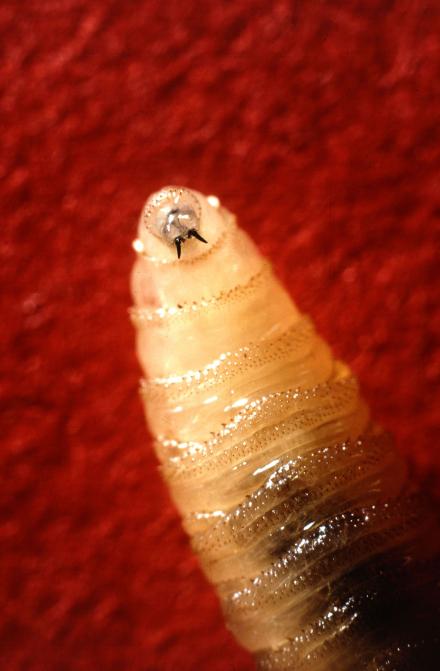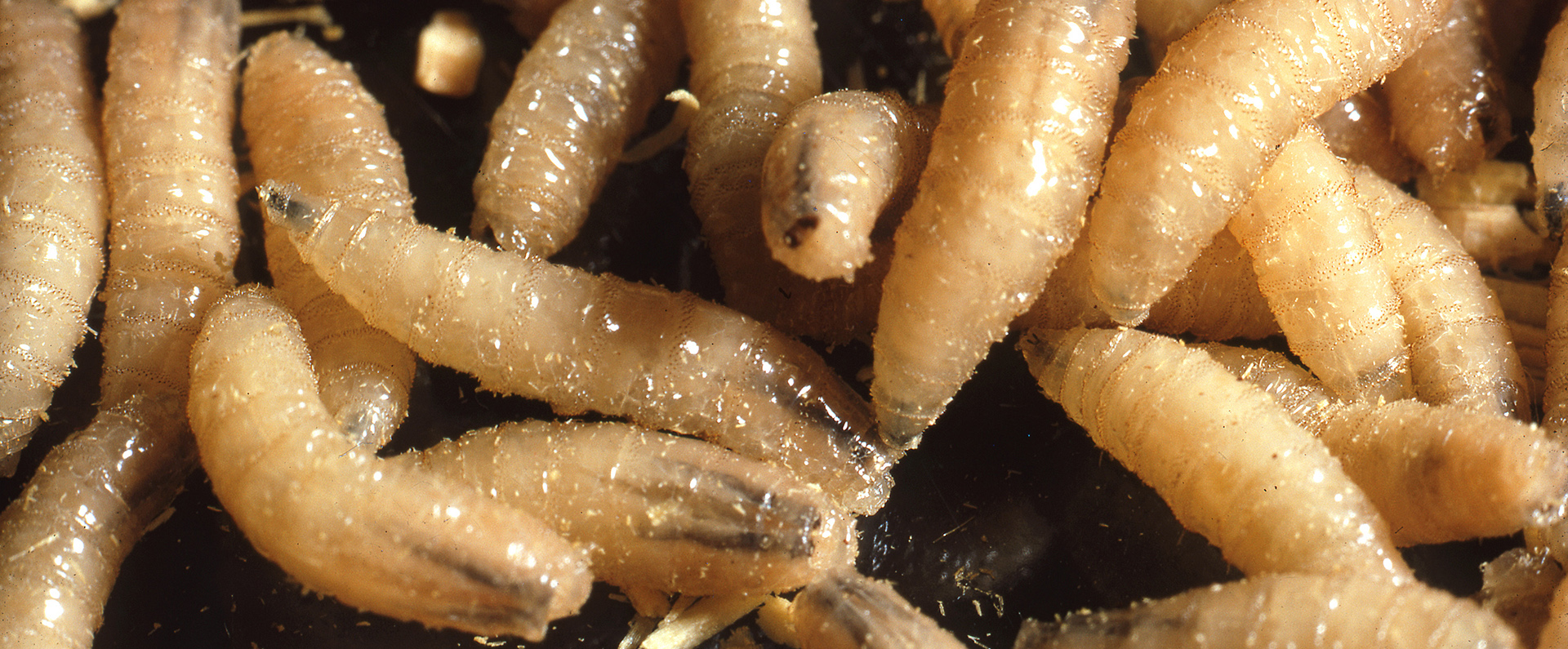Controlling a Flesh-Eating Pest

There is nothing good to say about the screwworm Cochliomyia hominivorax. It is a parasite that kills livestock and other warm-blooded animals. It lays eggs in open wounds on the host animal, and when the larvae hatch, they feed on the host's living flesh. ARS research helped to eradicate screwworm from the United States 30 years ago.
ARS researchers in the 1950s developed an effective remedy: the sterile fly technique, which released sterile (infertile) screwworm flies into infested areas so they would mate with wild screwworm flies that could then not produce progeny. The practice saves U.S. livestock producers at least $900 million annually.
ARS and USDA's Animal and Plant Health Inspection Service (APHIS) continue to collaborate on a sterile-fly rearing facility in Panama to create a barrier in Central America that prevents the spread of screwworms from South America.
However, in 2016, screwworms were detected at two sites in Florida—on wildlife in the Florida Keys and later on a stray dog miles away in Homestead. ARS scientists, working with APHIS and the Florida Department of Agriculture and Consumer Services, brought in nearly 154 million sterile flies from the Panama facility and released them in the Keys and southern Florida. They also conducted genetic tests to try to pinpoint the source of the outbreak so that regulatory officials could "close the door" and prevent future outbreaks.
By April 2017, just 6 months after the infestation was discovered, APHIS announced that the screwworm had been successfully eradicated in Florida. This is a great example of the unique capacity ARS maintains that can be wielded to protect U.S. food, feed, and animals..
Related Information
Research Project: Management of Flies Associated with Livestock


